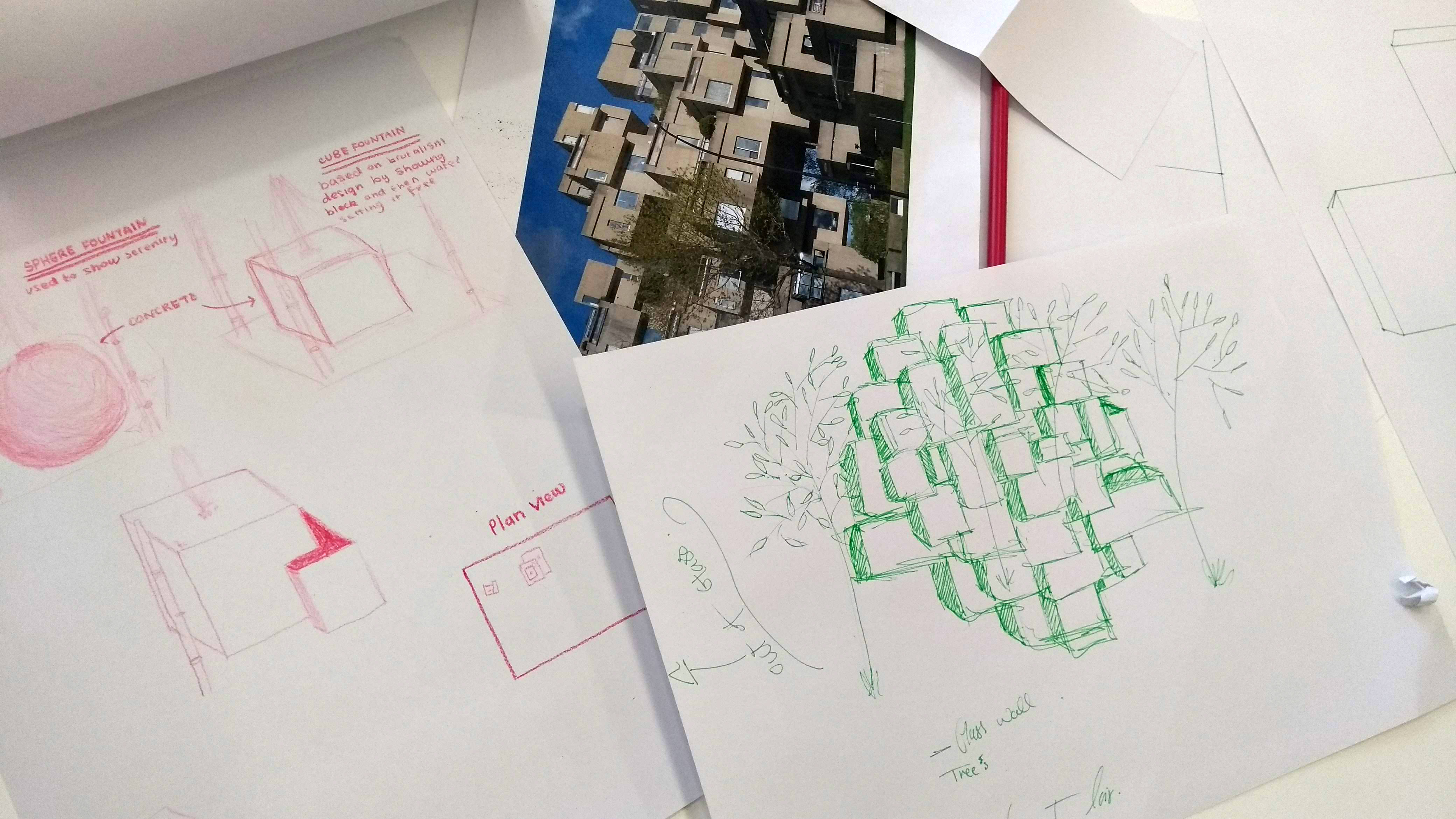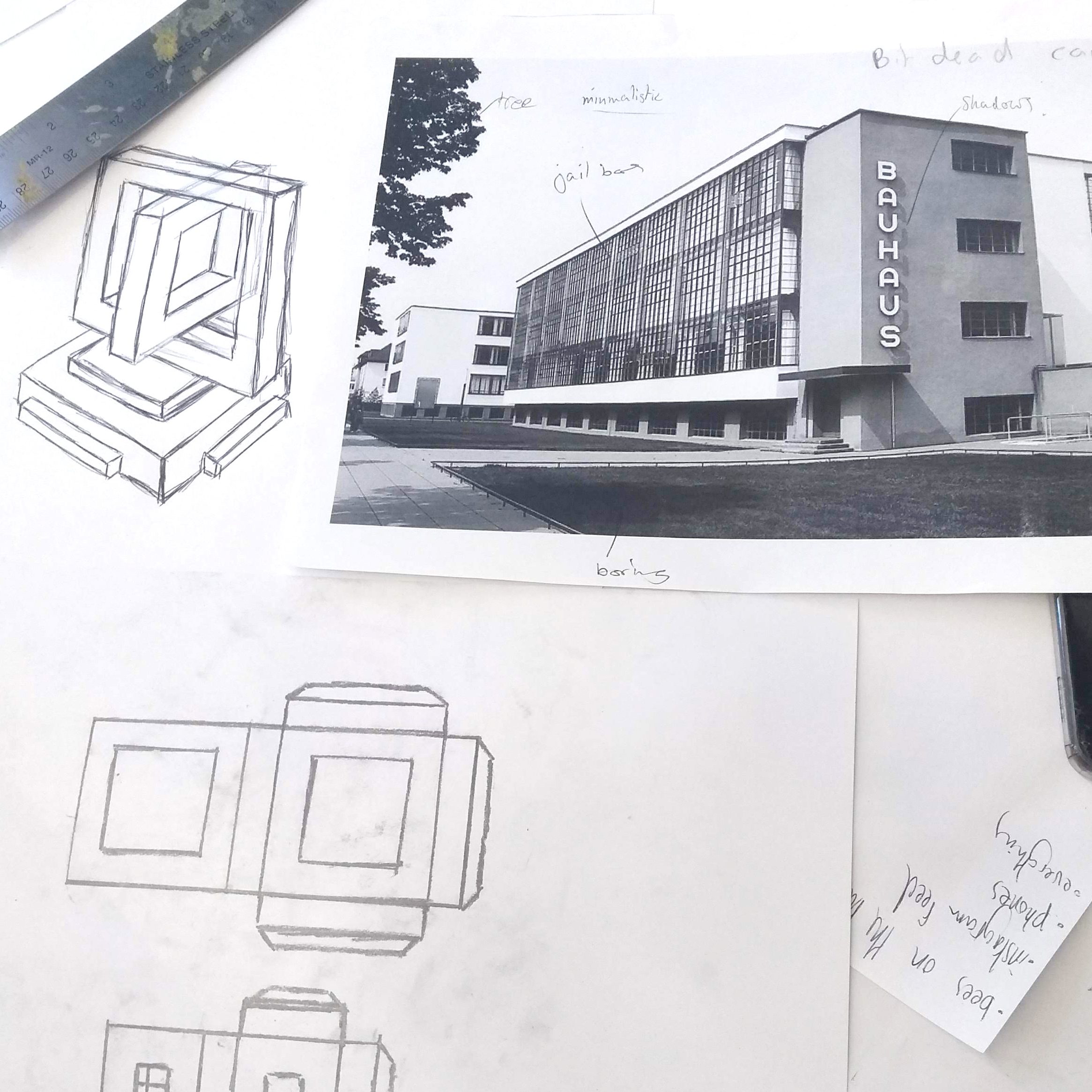By Rachel McMahon
Imagine that you have been commissioned to design a sculpture to sit alongside one of the most iconic pieces of architecture in the world!
Don’t forget to submit photos of your creations or post online and tag @natsatclub and @msasatclub
Overview
Professional artists who create public art pieces need to be aware of the environment and community they are creating the work for. So, in this project, you’ll ask ‘what is it that makes my chosen landmark iconic?’ Is it its height, an unusual design feature, the story behind it, the architect who designed it, the materials it is made from…? There are many reasons why a building might be ground-breaking, culturally important or ‘beautiful’.
As artists, we can help draw attention to the wonders around us and public art often elevates the location it sits within.
For example, Antony Gormley’s ‘Another Place’ in Crosby focuses our attention on the beach and its ever-changing tidal motions.
Rachel Whiteread’s Turner prize-winning Untitled (House) highlighted the architectural development and changes in London’s East End.
Using your creative skills, you will create a pitch for your piece of public art, by drawing designs and making a paper maquette for a piece of sculptural public art to compliment your chosen building and its iconic features! Professional artists often make pitches like these to get the go-ahead to start making the final piece, to get funding for their idea, or to win a prize etc.
Materials needed
- Paper – any type of paper (plain printer, newspaper or coloured etc)
- Drawing tool – a pen or pencil
- Sticking tool – tape and/or a glue stick
- Scissors,
- An image of iconic architecture i.e. the Taj Mahal, the Chrysler Building, the Humber Bridge, Dancing House etc. Examples can be found here
Activity
1. Find an image of a piece of iconic architecture. This link to Architectural Digest’s “50 most iconic buildings” is a good starting point, or you might already have something in mind that you’ve seen in person, like the Eiffel Tower or Empire State building!
2. Using the images you found of your chosen architecture, try and decide what made it so ground-breaking/iconic. You can use the internet to help with your research.
First, make visual notes about its distinctive features i.e. draw the parts that stand out to you (these don’t need to be beautiful detailed drawings, but they can be if you want). Then, think a bit more about it as a functional piece of architecture. You can use the internet to help here. Perhaps it is made using an unusual material, maybe it solves a social problem like affordable housing, or was it the tallest building in the world at the time? Take these into consideration and make some simple notes about the things you think are important.

3. Gather all your notes, drawings and research. Use these to inspire some designs for a sculpture to compliment your piece of architecture.
Draw 5 different designs for your sculpture. These designs could highlight your favourite parts of the building, mirror it or contrast drastically with the existing architecture.

4. Pick your favourite design and make a maquette (miniature model) of it out of paper. Use the paper in various ways – scrumple, twist, roll, layer or even make papier mache to form your 3D paper sculpture.


5. Pitch your idea! Convince us (using your drawings, paper sculpture and research) that this design is as iconic as the building it was inspired by.
Submit a photo of the paper sculpture, or photos of your designs with a sentence about your concept. Alternatively, send a short video pitch featuring the drawings and maquettes!
Thank you for taking part in the Manchester School of Art, Manchester Metropolitan University Art&Design Saturday Club Workshop.
Submit your paper sculptures, drawings and pitches or post online and tag @natsatclub and @msasatclub
Contributed by Rachel McMahon, Manchester School of Art, Manchester Metropolitan University Art&Design Saturday Club
Rachel is the Lead Tutor for Manchester School of Art’s Saturday Club. She is also an Associate Lecturer on the Illustration with Animation BA course at MMU and specialises in a range of 2D animation, print-making and illustrative practices.
“I’ve been involved in Saturday Club since I was a student ambassador and it is the loveliest thing to witness so many talented young people come to the Club year after year and share their ideas, skills and enthusiasm. I would argue that the staff at Saturday Clubs learn just as much each weekend as the Club members, particularly when we have visiting practitioners and artists who inspire everyone in the room!”